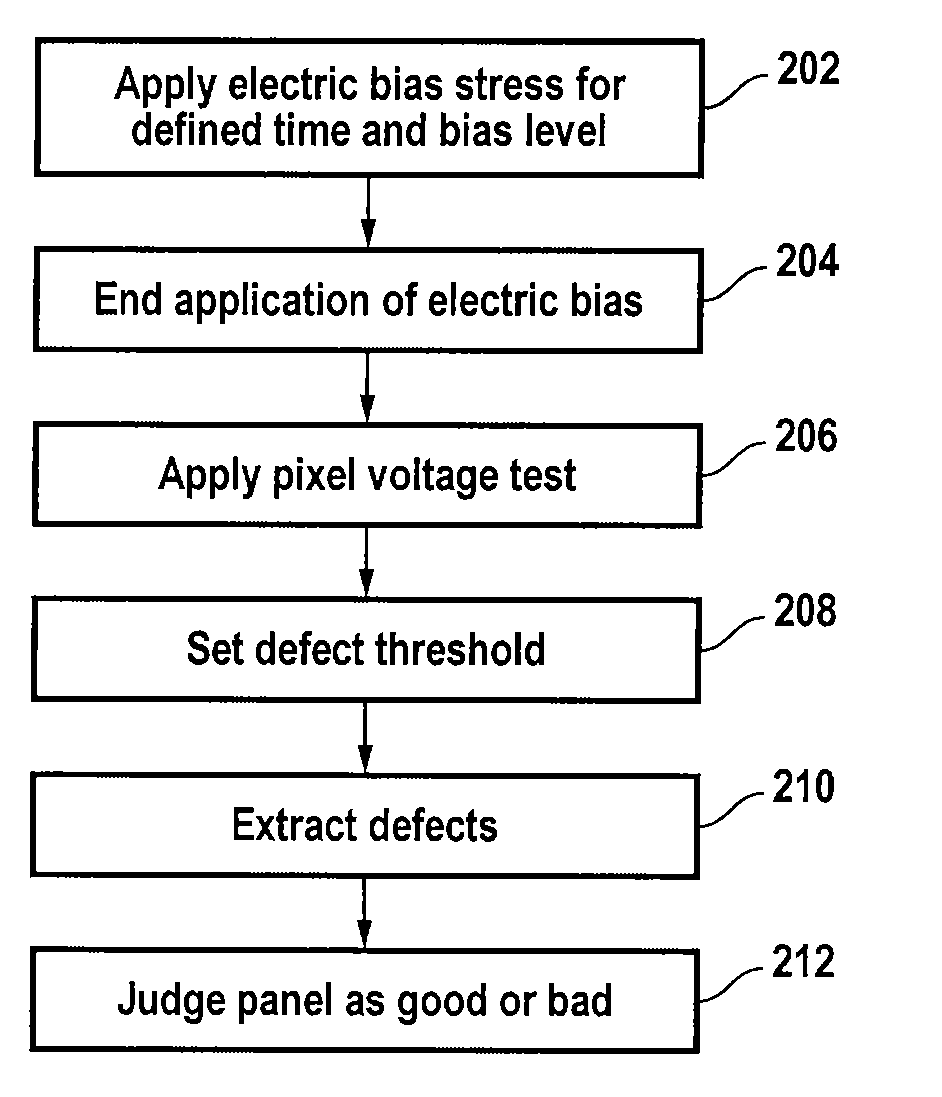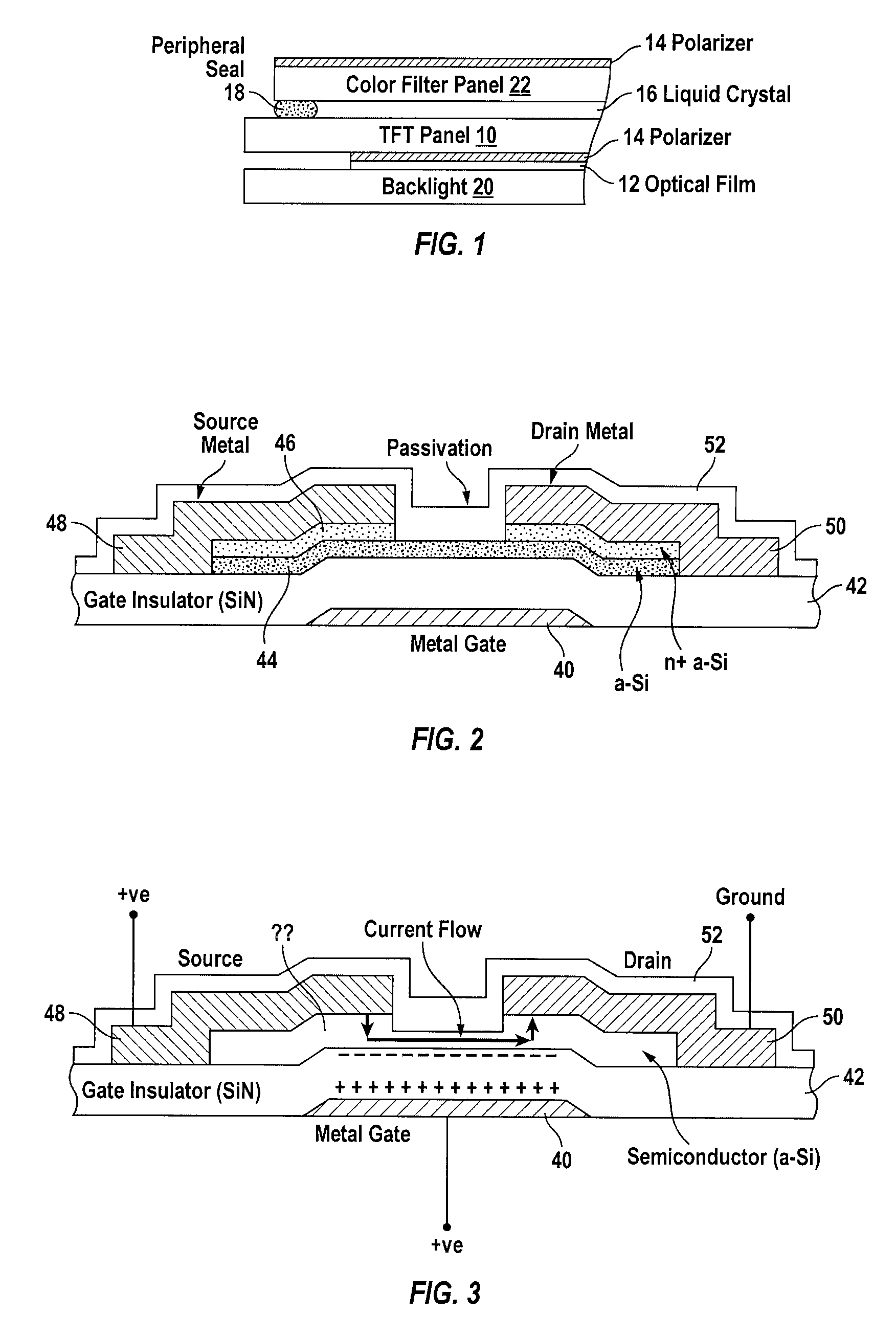Array testing method using electric bias stress for TFT array
a thin film transistor and array technology, applied in the testing of individual semiconductor devices, static indicating devices, instruments, etc., can solve the problems of deteriorating the image quality of tft-lcd during operation, inability to move charges (off current), and unstable amorphous silicon, etc., to reduce the overall cost
- Summary
- Abstract
- Description
- Claims
- Application Information
AI Technical Summary
Benefits of technology
Problems solved by technology
Method used
Image
Examples
Embodiment Construction
[0032]In accordance with the present invention, to detect defects in a TFT panel, an electric bias is applied to the TFT panel for a known time period. The applied electric bias induces charge trapping in the SiNx film and / or state creation in the a-Si:H film, thus giving rise to the TFT threshold voltage shift. The shift in the threshold voltage results in the variation of the TFT IOFF current. The amount of the threshold voltage shift (ΔVT) depends on the applied bias voltage, the duration of the bias, as well as the initial density of state in the films.
[0033]FIG. 7A is an energy band diagram of an MIS device prior to the application of an electric bias. FIG. 7B is an energy band diagram of the MIS device of FIG. 7A after the application of an electric bias causing charges to be trapped in the band gap. FIG. 7C is an energy band diagram of the MIS device of FIG. 7A after the application of an electric bias causing states to be created in the band gap.
[0034]FIG. 8 shows the depend...
PUM
 Login to View More
Login to View More Abstract
Description
Claims
Application Information
 Login to View More
Login to View More - R&D
- Intellectual Property
- Life Sciences
- Materials
- Tech Scout
- Unparalleled Data Quality
- Higher Quality Content
- 60% Fewer Hallucinations
Browse by: Latest US Patents, China's latest patents, Technical Efficacy Thesaurus, Application Domain, Technology Topic, Popular Technical Reports.
© 2025 PatSnap. All rights reserved.Legal|Privacy policy|Modern Slavery Act Transparency Statement|Sitemap|About US| Contact US: help@patsnap.com



